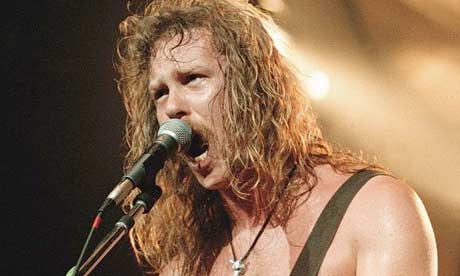To truly understand the colossal impact on metal of Metallica’s first two albums – newly remastered and reissued – first try to imagine that you are 14 and absolutely furious about pretty much everything. There was plenty of noisy, fast and deliberately ’orrible music available to delinquent teens in the early 80s, but punk rock and heavy metal belonged to an earlier generation: all great music, of course, but nothing we surly longhairs could truly call our own. And then thrash metal happened.
Metal nerds may quite reasonably attribute the creation of thrash to the efforts of Motörhead, Venom and numerous obscure bands that added extra fire and a dash of snot to the heavy metal blueprint, but Metallica’s debut album is the true starting point for a sub-genre that continues to exert a vast influence today.
Kill ’Em All – which was originally to have been called Metal Up Your Ass, until it was pointed out that the title might make the album unsellable – exploded into metal fans’ consciousness in the summer of 1983. It was brutal, abrasive and joyously aggressive; as much a paean to the joys of making a skull-shattering din as it was a statement of intent. Songs like Hit the Lights, Whiplash and Metal Militia heralded the arrival of a new, younger, spikier and much grittier musical force; a beer-swilling, speed-guzzling blizzard of arrogance, acne and antagonism that permanently blurred the lines between punk and metal. More than anything, it sounded like the future.
By the time Metallica released Ride the Lightning a year later, this fiery garage band had mutated into something far more imposing. Gone were the simplistic, high-speed assaults; replaced by a hugely ambitious reimagining of the heavy metal template that prized melody and intricate arrangements as highly as brute force and bravado.
Unlike many of their peers from the early thrash scene, Metallica were plainly developing into great songwriters, too. Metal’s detractors might be reluctant to admit it, but songs like Creeping Death and For Whom the Bell Tolls boasted hooks that would make Moby Dick flinch. There were even moments, most notably on grandiose semi-ballad Fade to Black, that even embraced subtlety, of all things. Some diehard fans balked at the notion that Metallica had grown up a bit, but the majority were simply blown away. Within the space of 12 months, the band had reinvented an entire genre twice. As an added bonus, through his groundbreaking work on Ride the Lightning, producer Flemming Rasmussen had almost casually redefined what heavy metal records could sound like and turned Metallica into a safe bet for world domination in the process.
Time is the real test of an album’s significance. Even now, 33 years after their debut, only one album is ever likely to beat Kill ’Em All and Ride the Lightning in a popular vote on metal’s greatest records – and that’s Master of Puppets, the third Metallica album, which turned four snotty, denim-clad hooligans in their early 20s into global superstars in 1986. By that point, of course, Metallica were firmly on the road to mainstream acceptance. Those first two records, on the other hand, will always belong to the scruffs, the outcasts, the Metal Militia.
Metallifacts
- The original cover for Metallica’s debut album, when it was to be called Metal Up Your Ass, featured a hand clutching a dagger emerging from a toilet bowl.
- The new title came from bassist Cliff Burton’s response to the reaction to the original name: “Those record company fuckers – kill ’em all!”
- Burton’s first band, EZ Street, also featured future Faith No More members Mike Bordin and Jim Martin. Burton later said their style was “covers, just wimpy shit”.
- They began the album barely a month after recruiting guitarist Kirk Hammett from Bay Area thrashers Exodus to replace Dave Mustaine, who was sacked for his drug and alcohol use.
- Originally, 15,000 copies of Kill ’Em All were pressed by Metallica’s label, Megaforce. It didn’t enter the US top 200 until 1986, three years after its release.
- Before the band began recording Ride the Lightning, they tried recruiting Armored Saint singer John Bush to take over as singer, because James Hetfield wanted to concentrate on guitar. He said no, because Armored Saint were doing so well.
- For Whom the Bell Tolls, from Ride the Lightning, has become a stadium sports theme, with several baseball players using it as entrance music, as well as the Denver Broncos, before defensive third-downs.
- Creeping Death, from Ride the Lightning, is the second most performed song at Metallica shows, with 1,413 outings, behind only Master of Puppets. It is based on the Plague of the Death of the Firstborn, from Exodus. That’s from the Bible, not the thrash band.
- The other Exodus were present on the album, too – Trapped Under Ice was inspired by the Exodus track Impaler.
- During the tour to promote Ride the Lightning, Metallica appeared at the Monsters of Rock festival, between the hair metal bands Bon Jovi and Ratt. Hetfield told the crowd: “If you came here to see spandex, eye makeup, and the words ‘oh baby’ in every fuckin’ song, this ain’t the fuckin’ band.”
• Remastered editions of Kill ’Em All and Ride the Lightning are out now on Virgin EMI.











